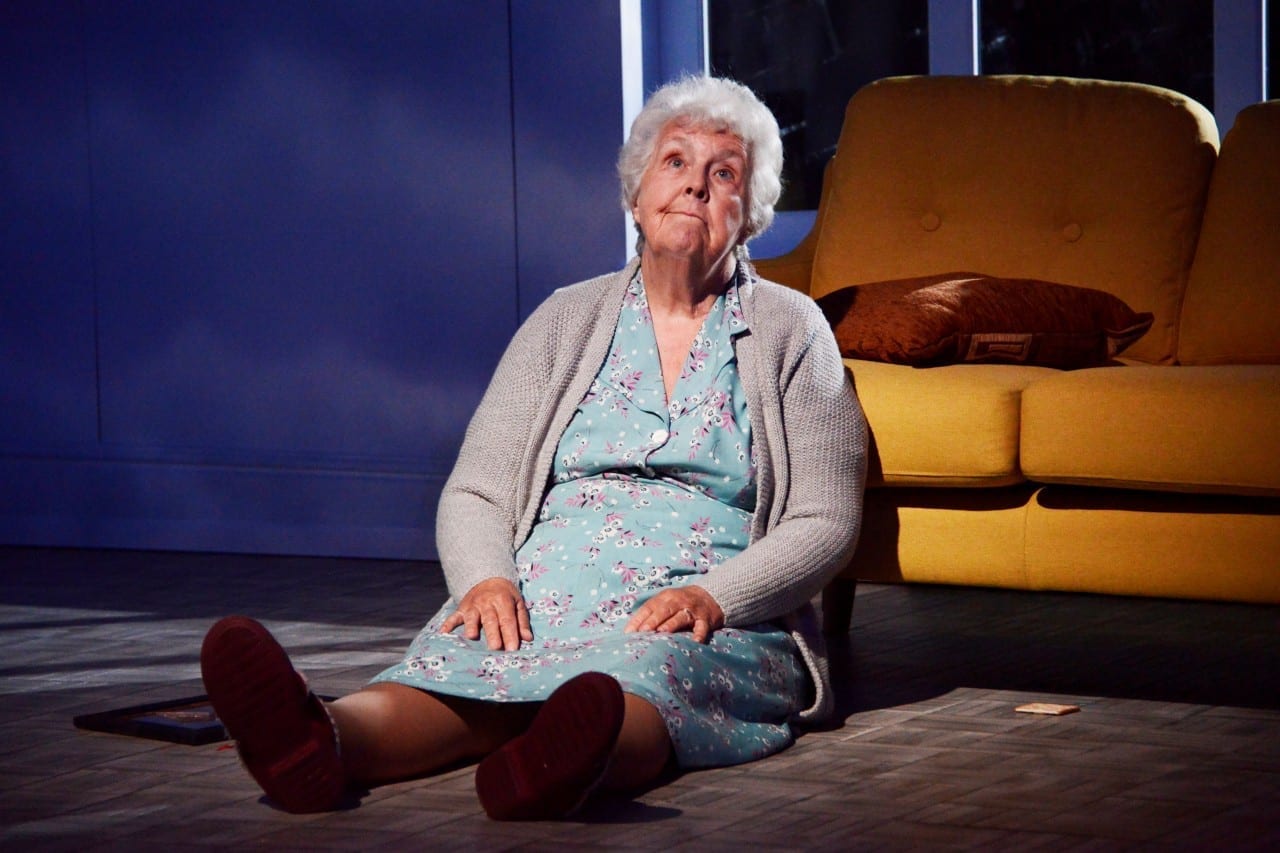These three monologues, taken from Bennett’s written-for-television series, have many things in common. They are stories of isolation, of loneliness, of mental illness. They are stories of ordinary lives played out in the Yorkshire suburbs, and, more often than not, of the hopelessness of big ideas when the little things that people really need are cast aside.
The first monologue is Lady of Letters, where we are introduced to Francis O’Connor’s beautiful set – it’s acute, slanting perspective, and its cloud-decorated walls and ceilings, giving an overwhelming sense of the expanse of the sky being constrained to the inside-orientated minutiae of these people’s lives. Lady of Letters follows the obsessive letter-writing campaigns of Miss Ruddock (Siobhan Redmond) and eventual downfall. Redmond initially looks constrained by her seated position, confining all her physical power to wonderfully sharp head movements and gesticulations, and when, later in the piece, she is allowed to wander the set, her movements are pensive, full of the pent-up concerns the character does not quite voice. Redmond is an expert at the prim disapproval that Miss Ruddock exudes at first, but the real joy comes in the final scene of the piece. Her body language is looser, there is more expression in her face, the emotion in her voice comes much more readily – we know she is internally freed before she tells us, and there is real delight in seeing that freedom – and the underlying compassion that was there all along – come to life.
The second monologue, A Chip in the Sugar, also starts seated, as Graham (Karl Theobald) twitches nervously in his bedroom, recounting his mother’s new adventures with a past flame. A Chip in the Sugar sees the past splitting up the established present with no regard for it, Graham’s mother undermining his careful life with little to no regard for his mental stability. Graham is constantly nervous, and this is apparent both in Theobald’s physicality and his voice – often edging into a whine, constantly on the verge of pleading for something that he doesn’t know how to ask for. Graham’s recounts of his mother’s goings-on are wonderfully dramatised by Theobald, his voice and body language transforming as he enters the stories, without ever going out of character. However, the eventual shocking reveal, when it comes, only allows raw emotion for a moment. Unlike Miss Ruddock, however, there is no freedom found in that conflict. Graham repeats the phrase “I didn’t say anything”, mantra-like, throughout the piece, an ingrained suggestion that that is exactly how he ended up here – and therefore it is no surprise that the end of the piece merely sees a return to static existence. Placing Lady of Letters and A Chip in the Sugar back-to-back offers two very different outlooks on life – neither of them may be particularly advisable, but remembering the loose-limbed sprawl of Miss Ruddock makes it clear which (eventual) attitude is preferable.
The set of the third monologue, A Cream Cracker Under the Settee, includes lovely stained glass windows, producing a church-like feel to Doris’(Stephanie Cole) living room. As the piece draws to a close, it begins to slowly dawn on the audience that this ambience may well be foreshadowing. Doris is full of dry humour, a defence against her underlying fear of being sent to a care home. Cole’s lilting, matter-of-fact delivery makes the moments of emotional break through all the more powerful. As Doris struggles to make her way round her house after her fall, she drags the picture of her and her husband around with her, both an obvious reminder of her isolation and a desperate attempt to hold onto a sense of companionship in any form. This is the funniest of the three monologues, but Cole also delivers the fullest sense of Bennett’s pathos, remarkably unencumbered by frequent scene changes, which slow down the pace in a way that is more irritating than echoic of her life.
Mic Pool’s sound design helps tie the three monologues together, the outside sound effects often serving to emphasise the isolation rather than giving a sense of the outside within reach. The three pieces complement each other, three different attitudes, paths that you can’t help but wish would cross, and that the isolated individuals could reach out to each other before it was too late.

